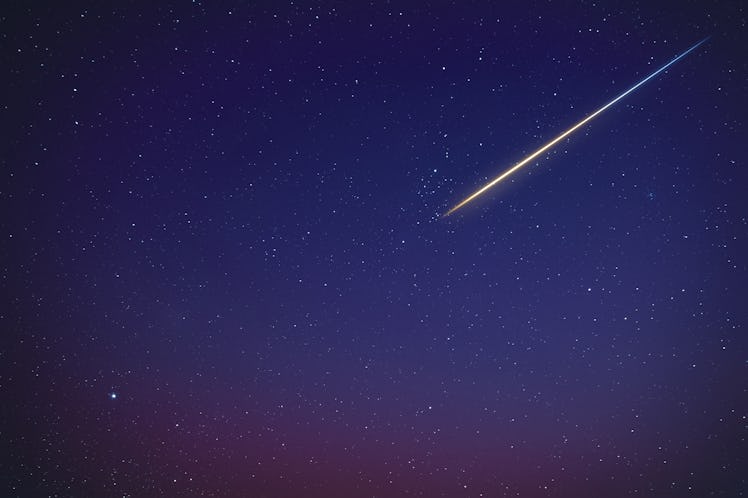Stunning Leonids Meteor Shower Will Soon Peak — Here’s How To Catch It
This month we’re set to see the Leonids meteor shower, which will be the second to last shower in 2022.

If you’re already feeling the itch to watch yet another a spectacular sky show this month, time to mark your calendars. After a total lunar eclipse that coincided with a full moon, and the peaks of some other fabulous meteor showers, November still has more in store.
This month we’re set to see the Leonids meteor shower, which will be the second to last shower we’ll see in 2022, so you won’t want to miss it. Here’s everything you need to know to make the shower a fun sky event for you and the kiddos to watch.
What are the Leonids meteors?
The Leonids meteors come from the comet called 55P/Tempel-Tuttle during its “highly elliptical orbit around the sun every 33 years,” Space.com explains.
When Earth passes through the debris, it gives us a spectacular show that we know as the Leonids meteors, and it’s always memorable. NASA explains that this meteor shower is known for producing really fast meteors that zip through the sky at 44 miles per second.
With the meteors traveling at this speed, we’re more likely to see meteors with long, bright streaks that look like fireballs. On average, there will be approximately 15 meteors per hour, so it’s a good active one to watch with the kids.
According to NASA, “every 33 years or so, viewers on Earth may experience a Leonid storm that can peak with hundreds to thousands of meteors seen per hour depending on the location of the observer.”
When will the Leonids meteor shower peak?
According to EarthSky.com, the meteor’s predicted peak is November 18, 2022, which means the night sky on November 17 or 18 should yield a good show.
For parents hoping to watch the meteor shower with the kids, and who are amenable to messing with bedtime, it’s probably favorable to choose the 18th, which is a Friday, because the best time to watch starts around midnight local time, NASA suggests, and it will last until dawn.
How can I watch the Leonids meteor shower?
After deciding on the best day to watch the shower, you’ll want to ensure you gather supplies for a colder evening now that we’re approaching the end of November. Sleeping bags, blankets, and perhaps some hot chocolate will make the time out under the stars more enjoyable for you and the kids.
NASA suggests finding an area where you have a good view of “as much of the sky as possible” so you can look for those shooting stars.
“Orient yourself with your feet toward the east, lie flat on your back, and look up,” NASA adds. “In less than 30 minutes in the dark, your eyes will adapt and you will begin to see meteors. Be patient – the show will last until dawn, so you have plenty of time to catch a glimpse.”
The last meteor shower we can start planning on seeing with our kids this year is the Geminid meteor shower, which will peak in December.